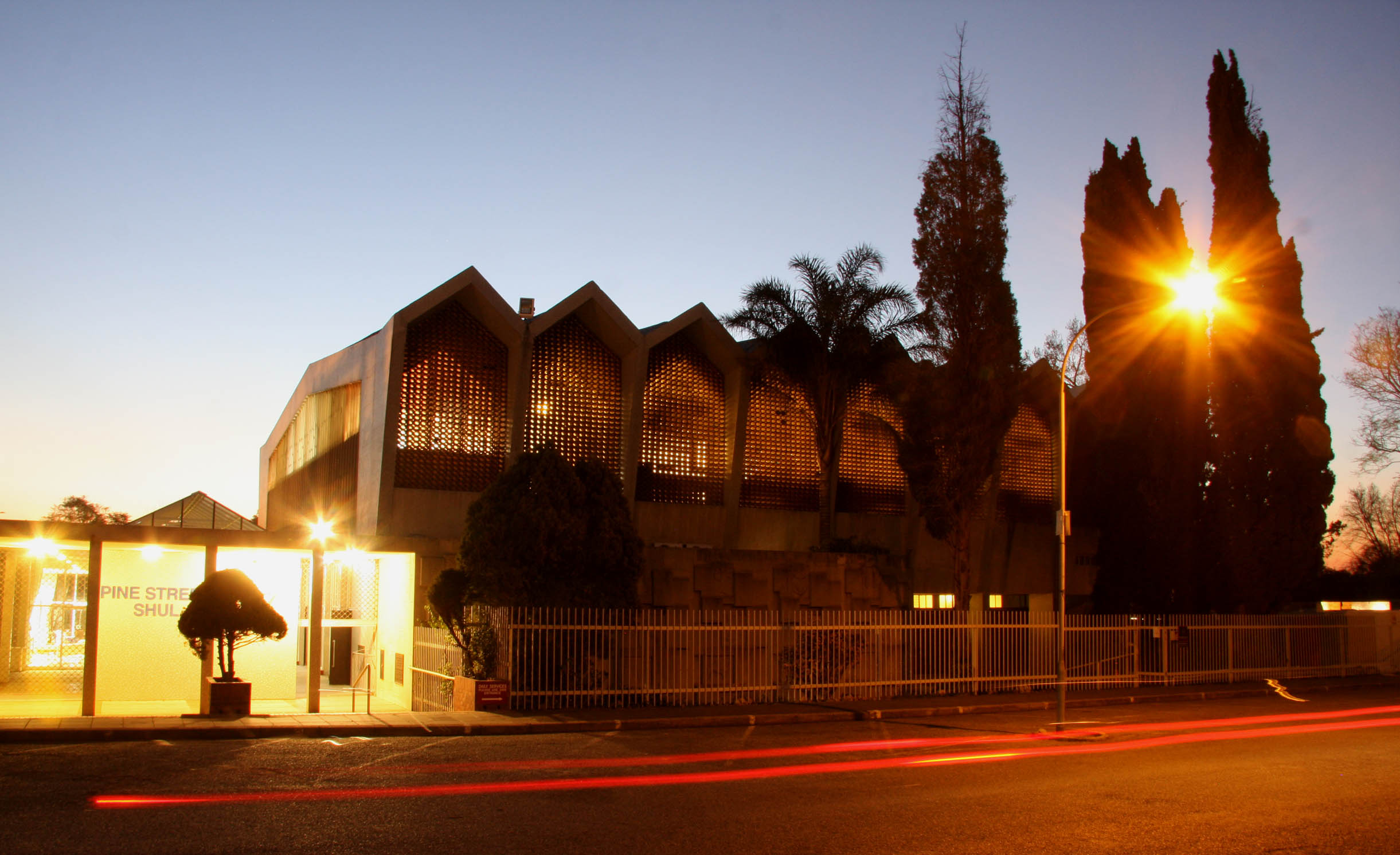
Community

Pine Street Shul positioned for the future
It sometimes seems as if everybody I meet either belongs to Pine Street Shul, once belonged to Pine Street Shul, or has a close family member who attends the synagogue.
This probably isn’t surprising when you think that the origins of the North Eastern Hebrew Congregation, as it’s officially known, go back to 1948, and the current building was formally opened more than 60 years ago, on 11 June 1961.
The new building was swish, the architecture grand, and it had a particularly meaningful feature on its eastern façade: stone friezes depicting the 12 tribes of Israel by sculptor Eduardo Villa. It could seat about 700 people. A brochure from that time notes that the hall was available for all public functions, including “weddings, Barmitzvahs, dances, meetings, concerts, plays, etc”.
Another unique claim to fame is that Pine Street Shul is situated on a site where Mahatma Gandhi lived for a time in the early years of the last century. The property and adjoining thatched building, now the Satyagraha House Museum, was owned by Gandhi’s close friend and fellow political activist, Herman Kallenbach. Kallenbach, a Lithuanian Jewish immigrant, was one of the leading architects and property developers of the young city of Johannesburg.
The birth and rapid growth of the Pine Street congregation conjures up all kinds of nostalgic reflections. The Johannesburg Jewish community was then at its height, numbering about 70 000 souls by the early 1960s and still growing. Orange Grove, Highlands North, Orchards, and Norwood had become largely Jewish neighbourhoods. Pine Street was one of the main synagogues serving them..
Our shuls have always played a central role in our lives, from the large urban congregations served by such majestic edifices as the famed Great Synagogue in Wolmarans Street and its successor, the Great Park Synagogue, to the modest yet dignified and elegant buildings that once were found in the smaller rural towns throughout South Africa. They not only provided spiritual guidance, but a sense of belonging and a connectivity to our heritage. They are the centre of our family milestones and a place where we receive strength and comfort.
Since peaking in the early 1970s, the Jewish community has been gradually growing smaller, and falling congregational numbers have reflected this. Pine Street is no exception.
However, those of us that choose to remain do so in the knowledge that we’re part of a unique, tight-knit, vibrant, and caring community, and that bare numbers don’t define us. Moreover, there have been encouraging signs of late of renewed vitality.
A year ago, Pine Street got a fresh injection in the form of power-couple Rabbi Motti and Rebbetzin Temmi Hadar. They are committed to growing the community in number and activities, to which end they have introduced women’s events and shiurim, young adult dinners and gatherings, teen lunches, a senior social club with monthly brunches, and interesting speakers. To ensure that it thrives, the shul is also embarking on a fundraising initiative. (See What’s On, page 16).
The daily and Shabbos minyanim continue to grow, and our social hall is now full every Shabbos morning for a delicious brocha. It’s incredible to watch two, three, or even four generations sit together in shul and relish in the tangible rejuvenation and excitement for a vibrant future ahead.








